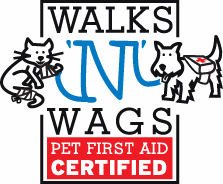 Wednesday, February 13
Wednesday, February 13 Your dog has bad teeth too?
No one wants to talk about dental hygiene for dogs... including myself....but as responsible pet owners, it's something that we strongly need to consider before we end up getting convinced by a vet that we need to anesthetize our dog for 'routine dental cleaning' (not that there's anything wrong with this... but there are other, simpler, cheaper and healthier alternatives).
I've heard of numerous stories from clients about how they thought their dog was going in for a 'routine' teeth cleaning and came out with 6 or 7 pulled teeth (usually occurring in older dogs)... In my opinion, there's nothing routine about using sharp metal to scrape an unconscious dog's teeth after many years of limited to no oral hygiene practice.
On the flip side, dogs who eat raw diets have beautiful, pearly white teeth. Part of the reason is because they're using they're teeth to chew at the bones and tougher meat, and this helps keep them strong and clean on a daily basis.
Dogs teeth are designed for puncturing and chewing, something the kibble diet lacks. Many dogs suck their kibble back like a vacuum cleaner and hardly use their teeth at all. Kibble is loaded with various additives to make it more appealing to dogs. But a side effect is that traces of the additives stay in the mouth and calcify.... oral hygiene is a major problem for older dogs (hence the reason vets end up pulling so many teeth).
When I switched my dog to a holistic vet I discovered this awesome (all natural) product called Liba 3. It works to remove the plaque by changing the chemistry of your dog's mouth... loosening up the gunk and eventually cleaning itself off.
One spray on the tongue, once a day (in the evenings). 35 days later and voila...
Enough said... Just watch this video...









